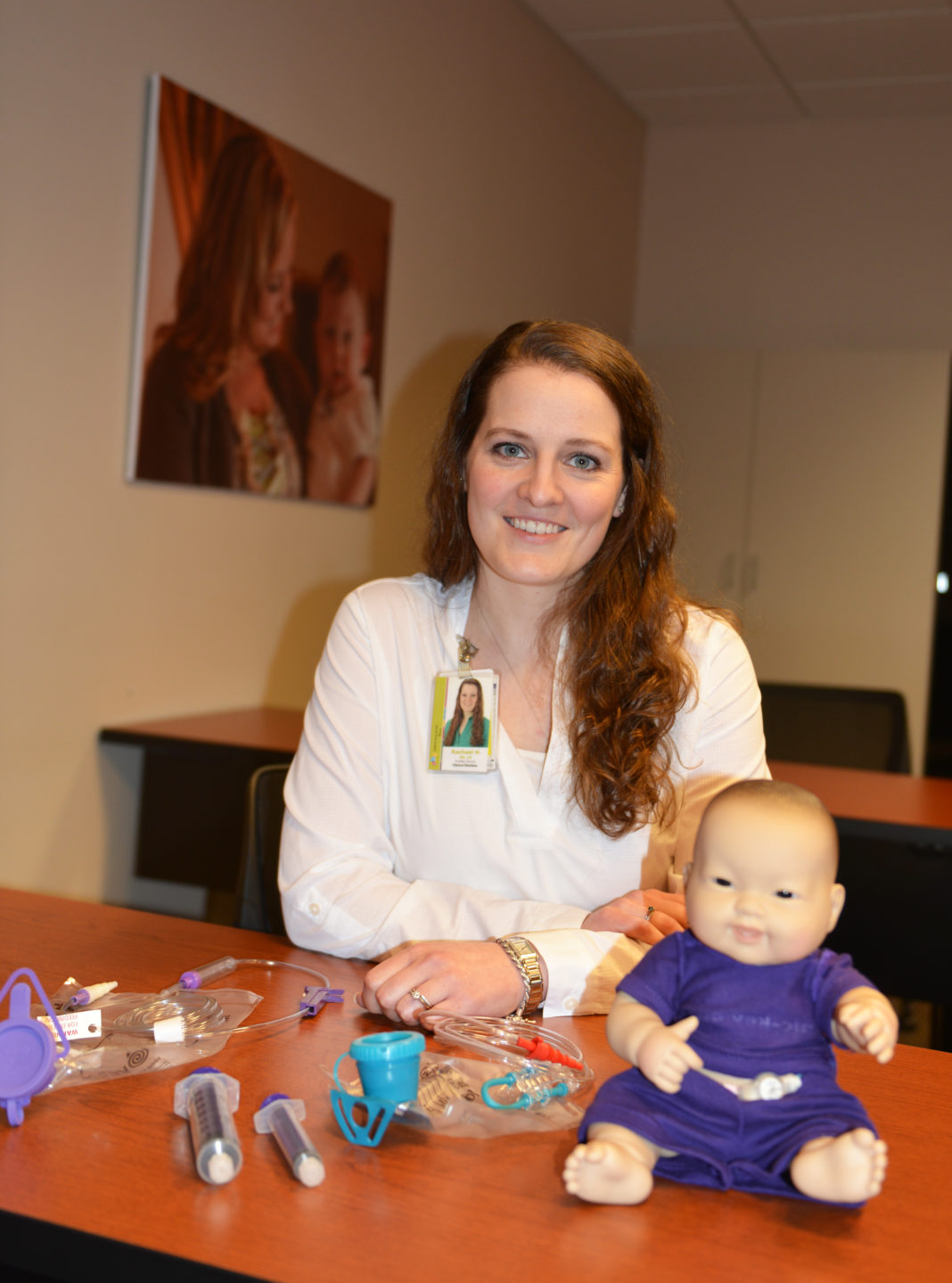Rachael Halvorson, RD, LD, has been a clinical dietician since 2009. “I’ve always had an interest in nutrition. My mom struggled with her weight, and I would coach her,” she said. Halvorson went to college planning to be an orthodontist but discovered it wasn’t a good fit. It was her mother who encouraged her to look into making nutrition a career.
“I started taking classes, and I fell in love with it,” Halvorson recalled. Her college internship, with what was then the Fairview Health System, included pediatrics. Ironically, Halvorson’s reaction to that rotation was, “That isn’t for me.” In fact, she admitted, she fainted in the neonatal intensive care unit.
After she graduated, Halvorson first worked in long-term care, then was a relief clinical nutritionist in a hospital setting. Neither of those was right for her. Ultimately, she lost her relief role to budget cuts, which was, she said, “A godsend, because I moved into the home care side of things.” Halvorson found her first home care job, which was mostly with adults, wasn’t enough of a challenge. That’s how she finally landed at Pediatric Home Service (PHS) in Roseville, MN almost four years ago.
1800 Kids, 175 Products
“In the adult world, you can set up a nutrition regimen, and they’re pretty stable. Kids are growing and gaining weekly, and you have to be sure the nutrition is meeting their needs,” Halvorson said. “The clinical dietician takes care of kids right out of the hospital, a month old, and we have a few adult patients who have pediatric diseases. We’re the experts on formula, feeding tubes, the whole nutrition realm.” For PHS’s 1800 clients, 175 different enteral nutrition products and over 200 supply items.”
“We predominantly only work with patients with feeding tubes,” she said.
“The majority are more on permanent status. The patient honestly can’t get enough nutrition by mouth. The major reason is that it’s not safe. They don’t have a functioning swallow, they can’t chew or can’t control food as it goes down, so it goes into the lungs or sits in the throat.”
Occasionally, Halvorson said, patients do graduate from the feeding tube. One premature patient was “so early she didn’t have the coordination to take a bottle. I worked with her for two and a half years. I just heard that she ultimately had the feeding tube removed, and she’s taking everything by mouth. She’s a happy little girl.”
These Kids Are Loving Life
Happy kids are an everyday part of the clinical dietician’s job at PHS. “It’s very common when I explain to someone what I do, the reaction is, ‘I could never do that.’ It was my reaction in the NICU. But coming into PHS, I’ve realized it’s so completely the opposite. I’ve never walked out of a patient’s home and thought ‘that poor family.’ These kids are loving life every minute,” Halvorson said. “Adults can learn a lot from them. We take ourselves way too seriously.”
While most of Halvorson’s efforts are focused on making sure children are growing and meeting their milestones, the opposite problem occasionally occurs. She recalls a baby who “looked like the Michelin Man. We realized this little baby was being overfed. When children are developmentally delayed, with a ventilator breathing for them, they might only need four or five hundred calories a day. Being overweight can be very detrimental to their respiratory function,” Halvorson said.
In addition to direct patient care, Halvorson is currently helping to implement a major change in clinical nutrition. All feeding tubes have been redesigned with a new external connector called ENfit. The change is requiring coordination all along the supply chain as well as education for the parents or home caregivers.
New Challenges for the Clinical Dietician
The goal of the change is to make sure that fittings for blood lines, feeding tubes and catheters are no longer interchangeable. “We’ve found out there’s a lot of people that are very scared of this change,” Halvorson said. “We’re working hard to point out this is a patient safety effort. There have been deaths associated with people accidentally connecting a feeding tube to an IV line. We recognize there’s a real risk.”
The major change has provided new challenges for Halvorson. She’s prepared educational materials including videos, and recently she hosted a Facebook Live event. “That was pretty awesome,” she said.











